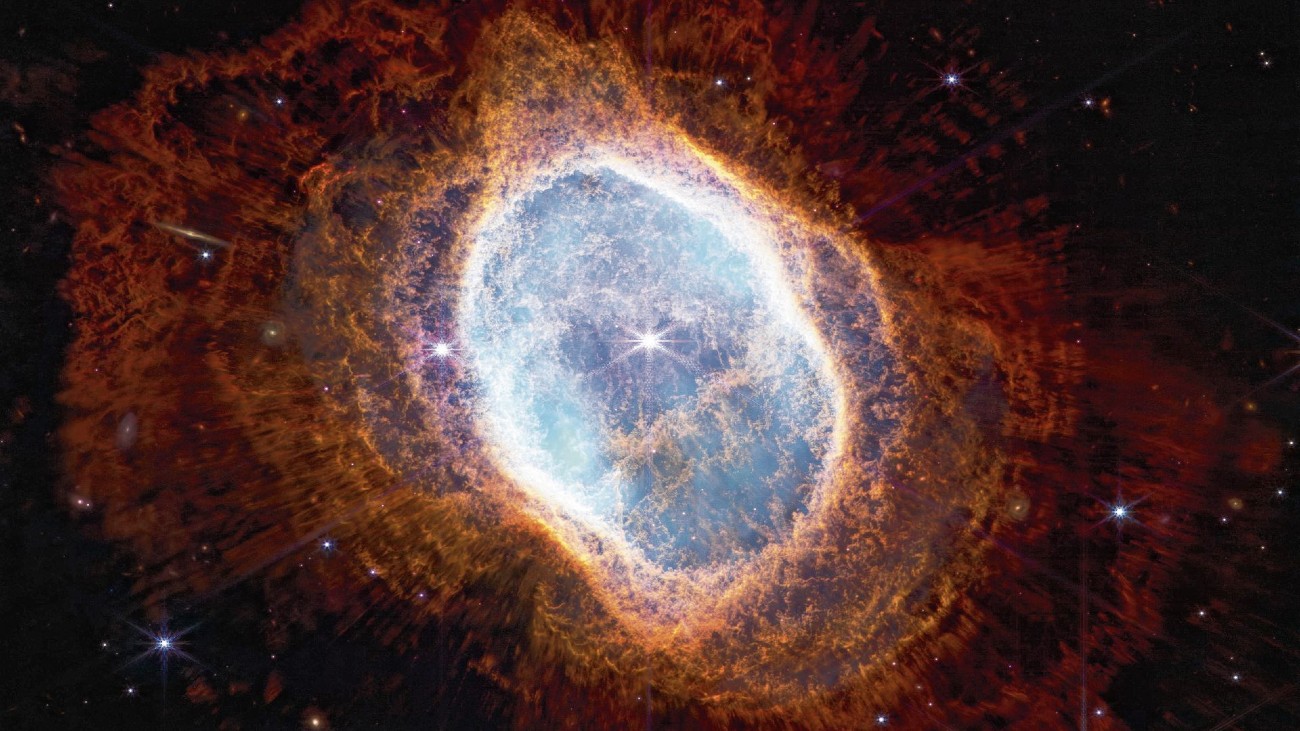The death of a Sun-like star is accelerated thanks to two, and possibly even three stars, discovered by astronomers using the James Webb Space Telescope.
When US President Joe Biden presented the first color images from the James Webb Space Telescope on July 11, they included an image of the Southern Ring Nebula. The planetary nebula formed when a dying Sun-like star gradually shed its outer layers, forming a bright and colorful shell of gas and dust. When it lost most of its mass, the star became a white dwarf.
As well as being a sight to behold, the photo has helped an international team of astronomers learn more about the death of the sun-like star. And it was messy.
Read also:
Double star in the nebula
The star in question is located 2,000 light-years (about 18,934,560,000,000,000 kilometers) from Earth. It was nearly three times the size of our sun, only much younger, only 500 million years old.
So where the shell of gas formed and continued to expand, what was left was a white dwarf about half the mass of the Sun, but nearly the same size as Earth. This is the central star of the nebula (left in photo by James Webb). In the center is a brighter star that forms a binary star system with the white dwarf; celestial bodies orbit around a common center of gravity.
But something was wrong, the team of nearly 70 astronomers noted when they tried to figure out how the nebula got its typical shape. The gas and dust are being flung in very specific directions, and the two stars in the center couldn’t have taken care of that together. There must be fellow stars in the “neighborhood” responsible for this.
Companions
And that indeed appears to be the case, the researchers now record Nature astronomy. Webb’s images show a series of spiral structures moving outward from the center. These concentric arcs are created when a companion star orbits the central star losing mass. Another comrade, also visible in the photo, is located a little further away.
Finally, when astronomers made a 3D reconstruction of the nebula using Webb’s data, they found some crazy protrusions. They are created when a celestial body hurls matter away and then shoots off in all directions. This could indicate an interaction between three stars in the center.
According to the researchers, these results indicate that the star system that led to the Southern Ring Nebula contained at least four stars. And that makes the death of the sun-like star quite chaotic.
Sources: Nature astronomy, Macquarie University via EurekAlert!
Appearance: NASA, ESA, CSA, O. De Marco | Director: J. Depasquale (STSCI)


